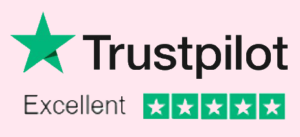
Compare Building Insurance Quotes within minutes | Monefi
- Safeguard your home with home security assurance
- Get tailored coverage options within minutes
- Smart savings through comparison via UKs leading insurance providers

What is Building Insurance?
Buildings insurance is your shield against potential threats to your home, covering damages arising from flood, fire, subsidence, storm, or vandalism. It extends its protective embrace over the structure of the building, encompassing walls, roof, floors, and any extensions, along with fixtures like built-in wardrobes, bathroom suites, and fitted kitchens.
In the event of leaky pipes, faulty electronics, or any criminal or accidental damage, your buildings insurance steps in to mend the wounds. Should the need arise, they are even prepared to cover the costs of a complete rebuild.
However, it’s crucial to note that your personal possessions fall outside the protective umbrella of buildings insurance. To safeguard your belongings, a separate contents insurance policy is essential.


Lifetime Mortgage: With a lifetime mortgage, you take out a loan secured against your property. You can receive a lump sum, regular payments, or a combination of both. The loan and any interest accrued are repaid when you (or both you and your partner) pass away or move into long-term care. The house is then sold, and the proceeds are used to settle the loan. If there’s any money left after repaying the loan, it goes to your estate.
Home Reversion: In a home reversion plan, you sell a portion or your entire home to a home reversion provider in exchange for a lump sum or regular payments. You can continue to live in the property, often rent-free, until you pass away or move into long-term care. When the house is sold, the proceeds are shared between you and the provider based on the proportion of ownership you’ve sold.
Equity release can offer financial flexibility in case you are retired, but it’s essential to consider the impact on your estate and inheritance for your loved ones. Get advice from our localised mortgage senior experts on your personal situation before booking anything! It’s always better to get an experts opinion on such personal finance matters.
Who needs building Insurance?
Your eligibility for equity release depends on these 6 key factors:


Homeowners with a Mortgage
The minimum age for equity release is typically 55 or 60, but it can vary depending on the specific plan and provider. It’s essential to check with your chosen equity release provider for their age requirements.

Landlords
Your home must meet a minimum value threshold of at least £70,000 and it’s in reasonable condition.

Property Owners
In most cases, equity release plans typically allow a maximum of two applicants. These applicants are usually the homeowners who jointly own the property for which the equity release is being considered

Ownership
You must be the owner of the property, and it should be your primary residence for over 6 months of that year.

Tenants
Generally, your home should be in England, Scotland, or Wales, although some lenders may consider Northern Ireland and other islands.

Leaseholders
While ‘standard construction’ homes, like those made of bricks or stones with pitched tile roofs, are commonly accepted, some lenders may consider other construction types. Its advisable to book a call and get clarity on this by Monefi’s mortgage experts.
What does building insurance cover?
Covered as standard
With our lifetime mortgage, your treasured home remains in your possession. You retain full ownership while accessing the funds you need.
Buildings insurance optional extras
With our no negative equity guarantee, you can rest easy knowing that you'll never be required to repay more than the amount your home fetches upon sale, as long as it's sold at the best price reasonably attainable.
Your financial security is our priority!


What's not covered?
Expert Guidance at Your Fingertips:
When you connect with us, our dedicated team will kickstart the process by confirming your eligibility for our lifetime mortgage. They’ll arrange a chat with a qualified, FCA-regulated equity release advisor. If it aligns with your needs, they’ll provide a personalised illustration and go over the important aspects like benefits, costs, and risks.
Share with Loved Ones:
Have an open conversation with your family to discuss your plans. Let’s work together to decide if this is the right choice for you. Monefi’s friendly team can help you figure it out from the very first call.
Application in Progress:
Once the decision is in your favour, you’ll complete the application with your equity release advisor. We’ll arrange for an independent property valuation, and upon meeting the necessary criteria, we’ll notify you of the approved amount.
Awaiting the Offer:
After assessing your application, we’ll send you an offer that spells out the borrowing amount. This step will be thoroughly reviewed with your equity release advisor and solicitor. You’ll simply need to sign the necessary legal documents.
Funds at Your Fingertips:
With all the pieces in place, your funds will be smoothly transferred to your bank account through your solicitor.
Factors influencing the cost of your Building Insurance*
- Standard feature: Provides protection against unexpected damage caused by natural events such as heavy rainfall or river overflow.
- Buildings insurance: Provides cover to structure and permanent fixtures.
- Contents insurance: Covers items inside your home, including clothing, electronics, furniture, and carpets.
- Most standard buildings insurance policies provide coverage for damage caused by subsidence, but this applies only if your property hasn’t experienced such issues before.
- Some policies may also include coverage for losses or damages to belongings due to subsidence and offer temporary accommodation if you need to move out during repairs.
Fire coverage is a standard inclusion in both buildings and contents insurance. If you have both types of coverage, it should safeguard the structure of your home as well as all the contents within it, from furnishings and appliances to jewellery, electronics, clothing, and books.
You almost certainly have coverage for damage resulting from storms under your buildings and contents insurance. This coverage can help mitigate financial losses caused by a storm, such as roof tiles being blown off. However, it typically applies only to your residence and any additional structures like sheds, excluding damage to fences, hedges, and gates.
Most standard buildings insurance policies encompass damage resulting from sudden water leaks or burst pipes, often referred to as “escape of water” coverage. Check with your insurer if your policy covers the repair or replacement of burst pipes, as some policies may only cover the damage caused by the leak. Note that gradual leaks, seen as a maintenance issue, are typically not covered.
Theft coverage is a standard inclusion in contents insurance but typically applies to items stolen from inside your home.
In reality, your phone is more likely to be stolen while you’re outside your home. To protect against this, you may need to add coverage for personal possessions outside your home, which is typically not part of the standard package. Double check with your insurance provider; if it’s not included, you can usually add it to your policy for an additional fee.
Things to consider when choosing building insurance:
Exclusions and Limits
Different insurance types come with varied pricing. It’s crucial to weigh your options to find what suits your business best.
Contents Cover
Your industry or profession has unique risks, impacting the insurance cost. Tailored insurance is key.
Compulsory and Voluntary Excess
Larger businesses with more employees or higher annual turnovers generally face higher insurance costs.
Unoccupied Home Considerations
Larger businesses with more employees or higher annual turnovers generally face higher insurance costs.
Public Liability Cover
Comprehensive coverage across multiple policies will reflect in your premiums, but it’s worth the investment for the right protection.
Emergency Helpline
A track record of frequent insurance claims or past legal issues can increase your insurance costs.
Types of Damage Covered
Opting to pay more towards any claims can lead to lower premiums, offering a potential saving strategy for your business insurance.
Alternative Accommodation Provision
Opting to pay more towards any claims can lead to lower premiums, offering a potential saving strategy for your business insurance.
What Do I Need for a Building Insurance Quote?
1. Click on Get a quote
2. Answer a few questions
3. Get your affordable deal within minutes
Latest news:
What distinguishes buildings insurance from contents insurance?
Typically, you can expect to receive between 20% and 60% of your home’s market value (or the portion you decide to sell). When contemplating a home reversion plan, it’s essential to consider:
– The possibility of releasing equity in multiple payments or as a single lump sum.
– The minimum age requirement for initiating a home reversion plan.
Is documentation required to obtain a quote for buildings insurance?
Although there aren’t inherent dangers or pitfalls, it’s vital to recognise that equity release will diminish the inheritance you can pass on to your loved ones. Similar to conventional mortgages or borrowing arrangements, you’re obliged to repay the borrowed amount, along with the accumulating interest, at a later date. It’s a financial commitment to be aware of.
What is the process for obtaining a quote for buildings insurance?
Typically, the repayment of the lifetime mortgage occurs when the house is sold. If you decide to move into long-term care, you or your solicitor will oversee the sale process. In the event of your passing, if you have a will, an executor will handle the sale, or if you don’t, administrators will manage it. Any remaining funds from the sale belong to you or your estate.



